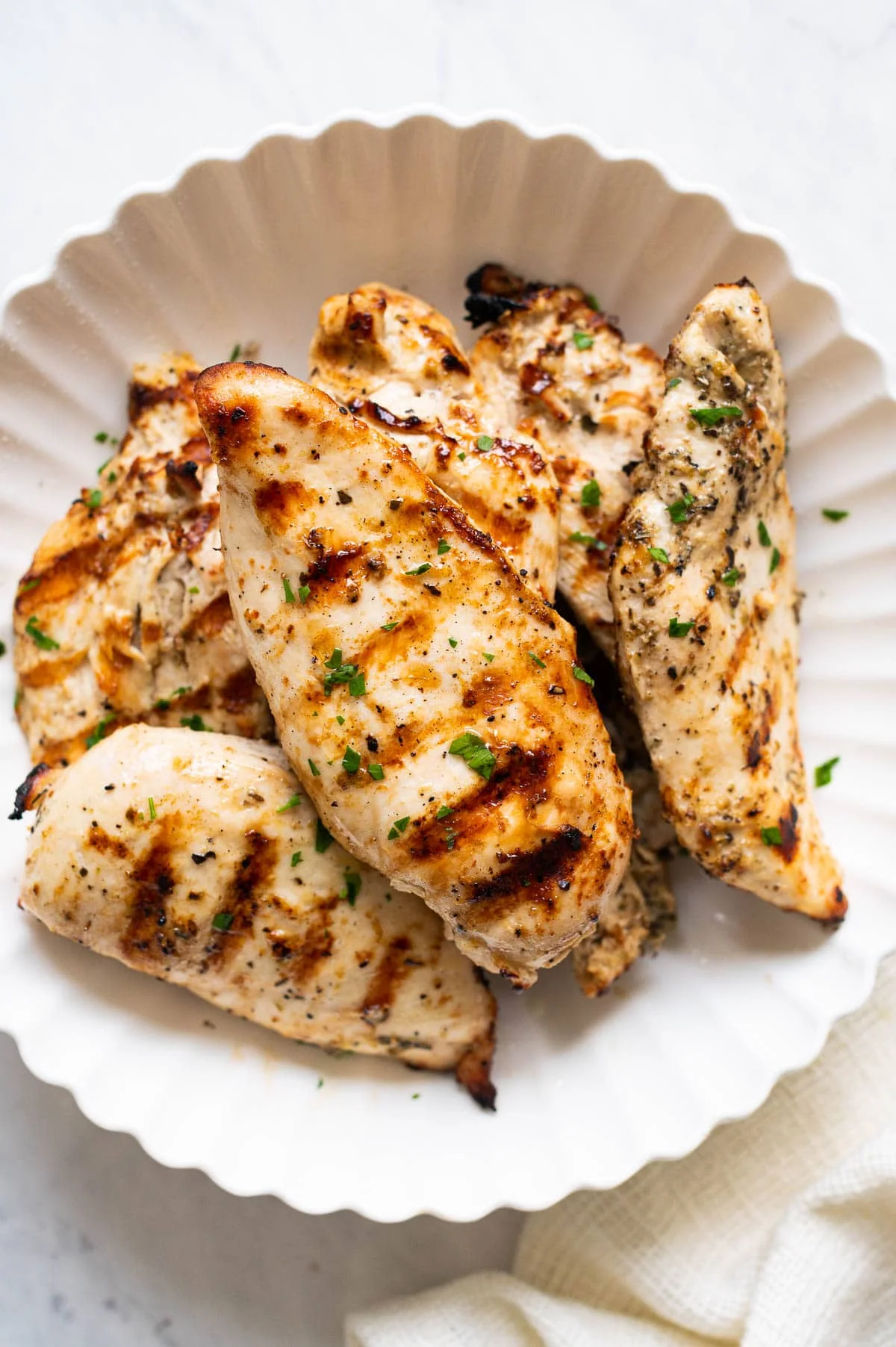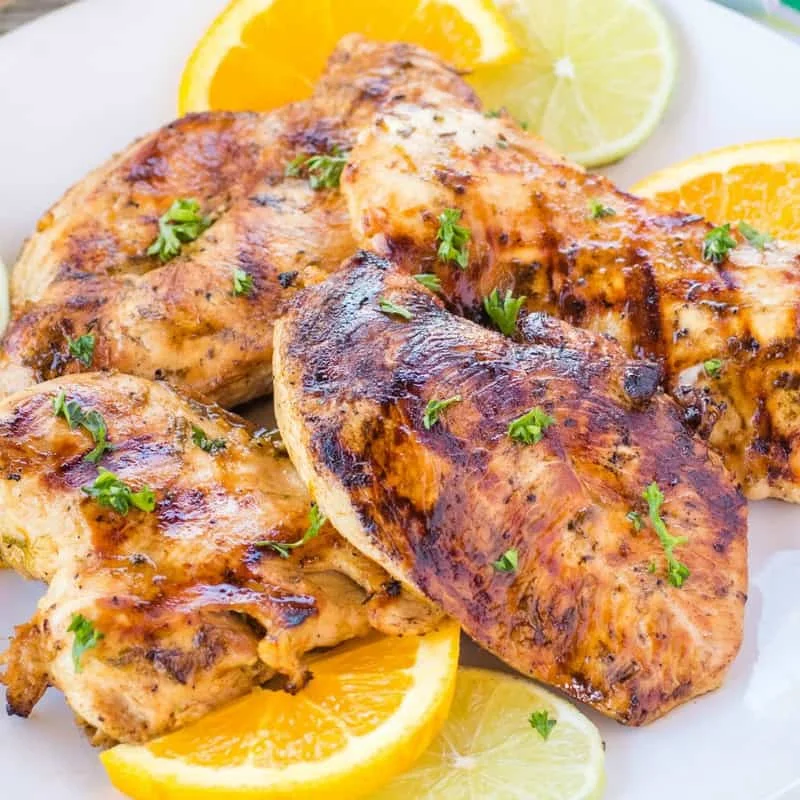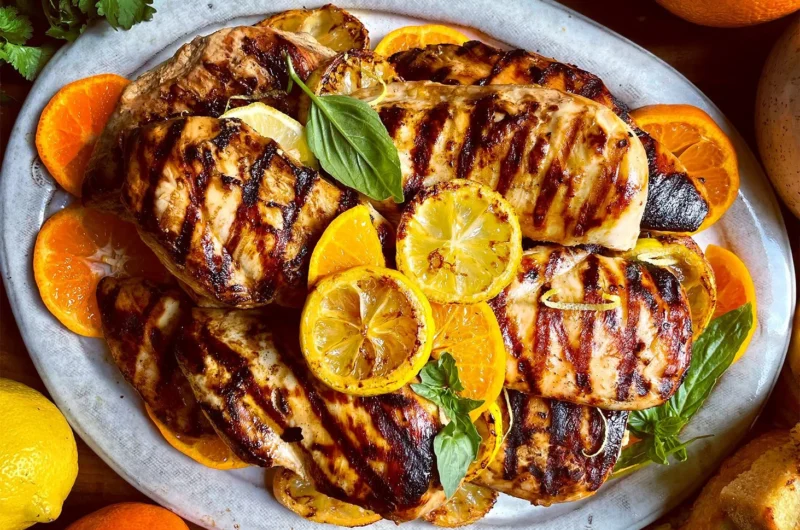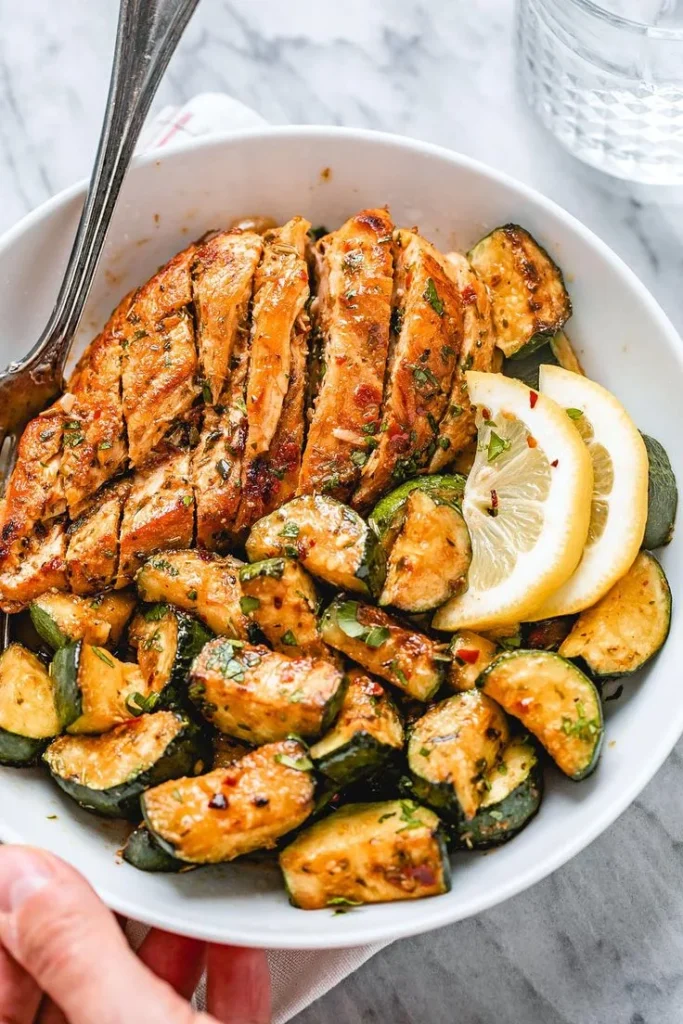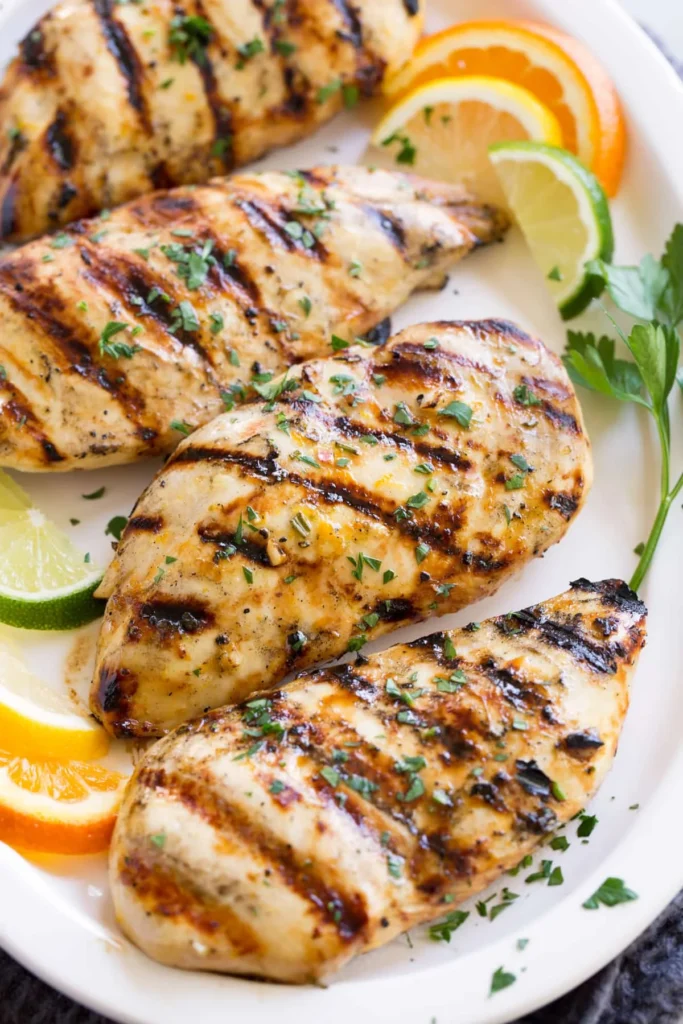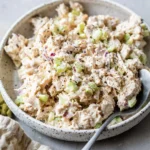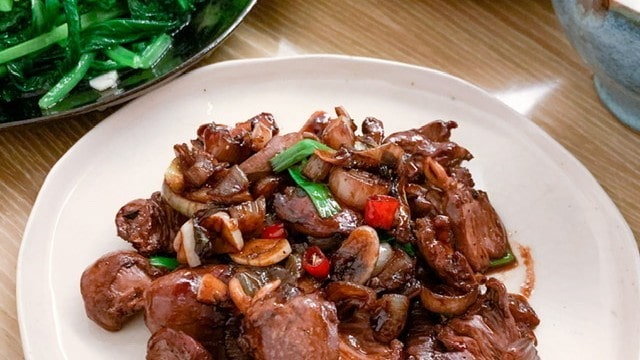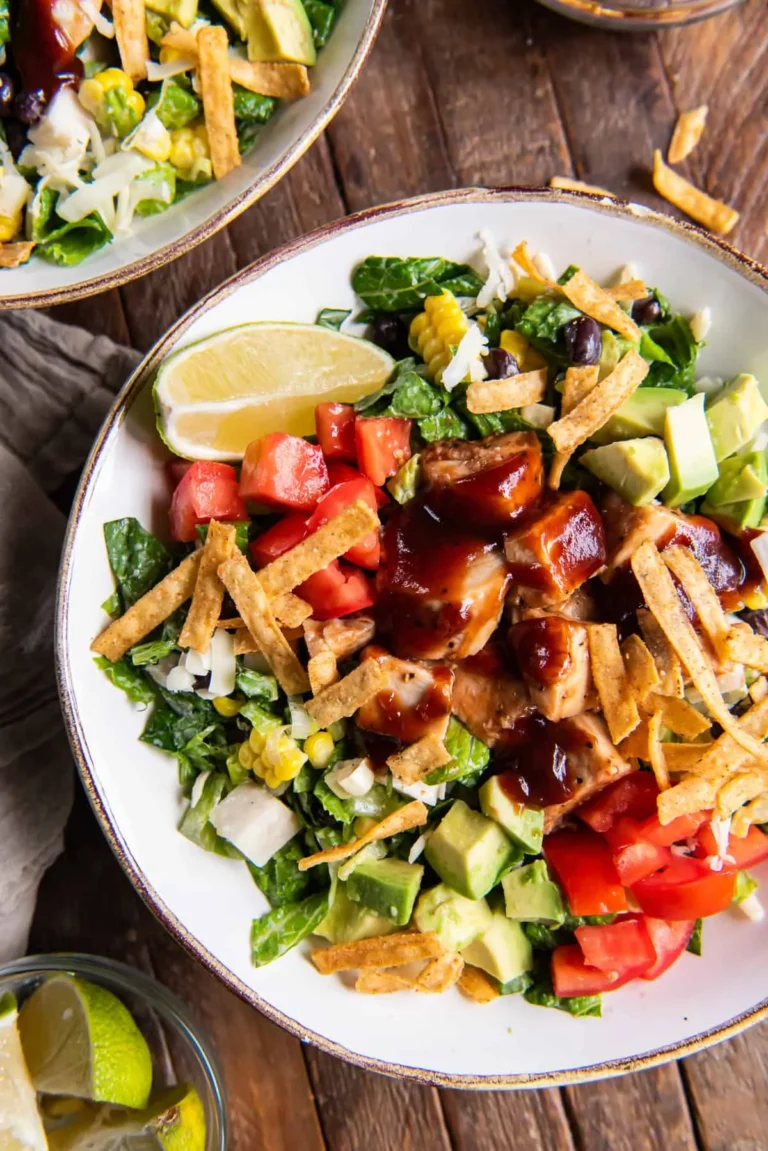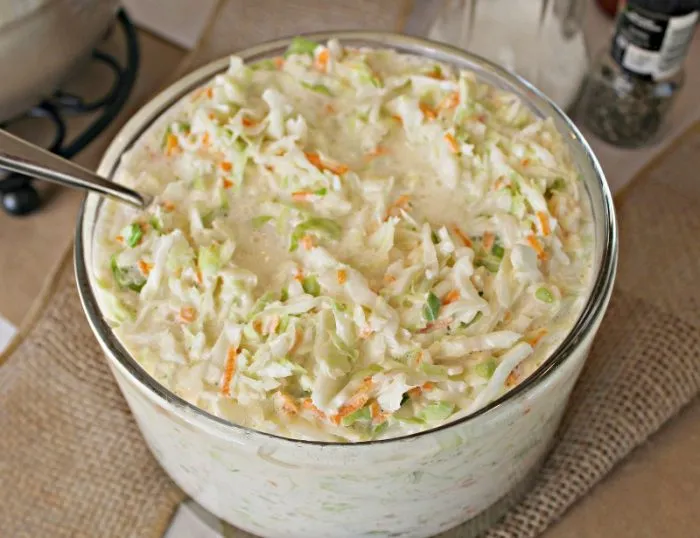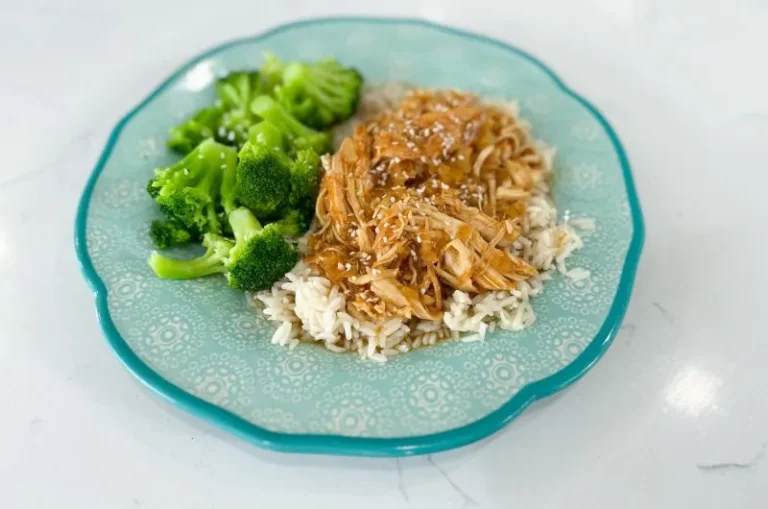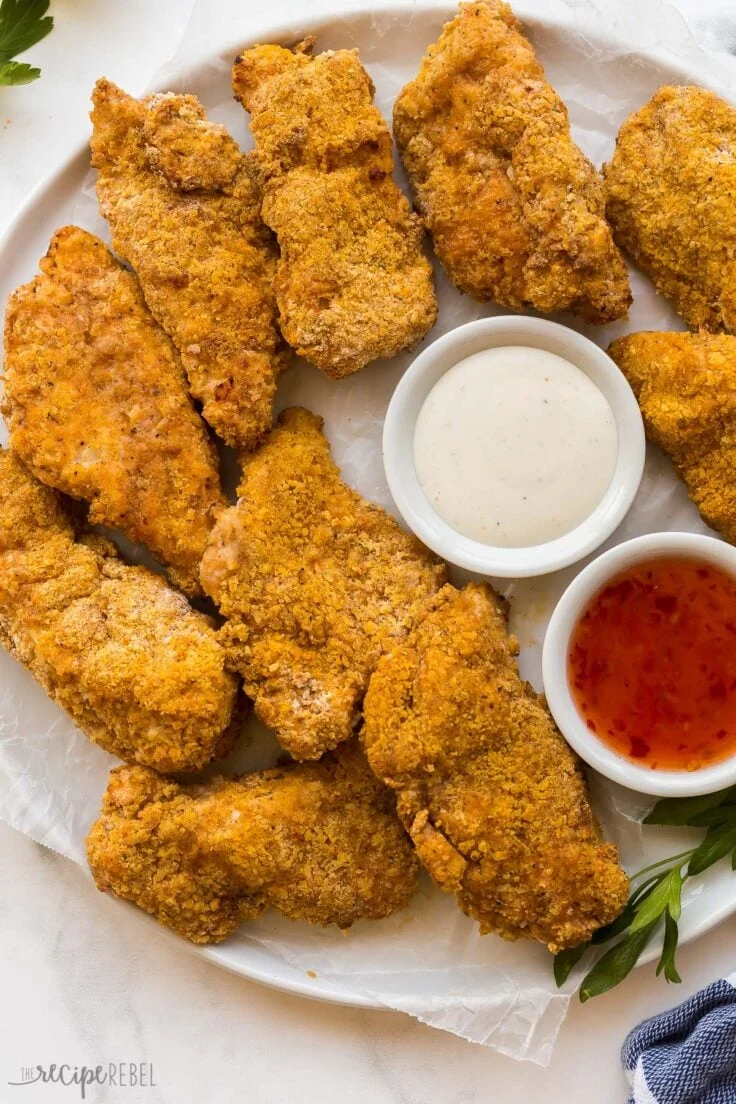Pineapple Sage Chicken Recipe
Do you crave a dish that offers a burst of tropical flavors with a hint of herbal goodness? Look no further than this tantalizing Pineapple Sage Chicken recipe.
Marinated in a delightful blend of spices, the succulent chicken is then smothered in a luscious pineapple sage sauce that will transport your taste buds to paradise.
With each juicy bite, you’ll experience the freedom of culinary exploration and indulge in a dish that is both satisfying and unforgettable.
Contents
- 1 Key Takeaways
- 2 Pineapple Sage Chicken Recipe
- 3 Ingredients
- 4 Marinating the Chicken
- 5 Preparing the Pineapple Sage Sauce
- 6 Cooking the Chicken
- 7 Serving Suggestions
- 8 Tips and Tricks
- 9 Nutritional Facts:-
- 10 Frequently Asked Questions
- 10.1 Can I Use Dried Sage Instead of Fresh Sage in This Recipe?
- 10.2 How Long Should I Marinate the Chicken for Optimal Flavor?
- 10.3 Can I Substitute Pineapple Juice for Fresh Pineapple in the Sauce?
- 10.4 Can I Bake the Chicken Instead of Grilling It?
- 10.5 Can I Use Boneless, Skinless Chicken Thighs Instead of Chicken Breasts in This Recipe?
- 11 Conclusion
Key Takeaways
- There are various marinade options for Pineapple Sage Chicken, including Teriyaki, Lemon Herb, Spicy Chipotle, Mediterranean, and Asian-inspired.
- The Pineapple Sage Sauce is made with pineapple juice, sage leaves, garlic, soy sauce, and honey, and can be used as a glaze or dipping sauce.
- The chicken should be pan-seared on the stovetop before transferring it to the oven, and can be marinated in pineapple juice, sage, garlic, and soy sauce.
- Serving suggestions for Pineapple Sage Chicken include pairing it with coconut rice, grilled pineapple, fresh herbs, a citrus vinaigrette-dressed side salad, and roasted vegetables.
Pineapple Sage Chicken Recipe
Course: MainCuisine: TropicalDifficulty: Easy4
servings30
30
minutes300
Close your eyes, take a bite, and let your taste buds transport you to the tropics with our Pineapple Sage Chicken. This recipe is a delightful fusion of succulent chicken, sweet pineapple, and aromatic sage. It's a culinary journey that evokes the essence of paradise, and it's here to tantalize your senses.
Ingredients
4 boneless, skinless chicken breasts
1 cup pineapple juice
1/4 cup soy sauce
2 cloves garlic, minced
1 tablespoon fresh sage leaves, chopped
Salt and pepper to taste
1 cup pineapple chunks (canned or fresh)
1/4 cup fresh cilantro leaves for garnish
Olive oil for cooking
Directions
- Begin by marinating the chicken breasts in a mixture of pineapple juice, soy sauce, minced garlic, chopped sage, salt, and pepper.
- In a skillet, heat olive oil over medium-high heat. Add the marinated chicken breasts and cook until they're golden brown on both sides, about 4-5 minutes per side. Remove them from the skillet and set them aside.
- Return the cooked chicken to the skillet, allowing it to heat through and soak up the pineapple-sage goodness.
Ingredients
To make Pineapple Sage Chicken, you’ll need several key ingredients. First, you’ll need boneless, skinless chicken breasts. Make sure they’re fresh and of high quality for the best flavor.
Next, gather pineapple juice, which will add a sweet and tangy taste to the dish. Fresh sage leaves are essential to infuse the chicken with a delightful herbal aroma. Other ingredients include garlic, olive oil, salt, and black pepper to enhance the overall taste.
Marinating techniques play a crucial role in this recipe, as they help tenderize the chicken and infuse it with flavor. The combination of pineapple and sage creates a unique and delicious flavor pairing that will leave your taste buds dancing with joy.
Marinating the Chicken
Now that you have gathered all the ingredients for your Pineapple Sage Chicken, it’s time to talk about marinating the chicken.
The optimal marinating time for this recipe is at least 2 hours, but overnight is even better for maximum flavor.
As for the marinade, you’ll need a combination of pineapple juice, soy sauce, garlic, ginger, and a touch of brown sugar to create a sweet and savory marinade that will perfectly complement the chicken.
Optimal Marinating Time
Marinate the chicken for at least two hours to enhance its flavor and tenderness. The benefits of marinating chicken are numerous. Not only does it infuse the meat with delicious flavors, but it also helps to tenderize it, resulting in a juicy and succulent dish.
Different marinating techniques can be used depending on your preference and the recipe you’re following. You can choose to marinate the chicken in a liquid marinade, such as a mixture of herbs, spices, and liquids like vinegar or citrus juice. Alternatively, you can opt for a dry rub, which involves coating the chicken in a mixture of herbs, spices, and seasonings.
Whichever method you choose, the key is to give the chicken enough time to absorb the flavors. After marinating, the chicken will be ready for the next step – finding the best marinade ingredients to create a mouthwatering pineapple sage chicken.
Best Marinade Ingredients?
For the best marinade, use a generous amount of flavorful herbs and spices to enhance the taste of your chicken. Marinades are a great way to infuse your chicken with delicious flavors and add moisture to keep it tender and juicy. Here are five different marinade flavors to try:
-
Teriyaki: The combination of soy sauce, ginger, garlic, and a touch of sweetness creates a savory and slightly sweet flavor profile.
-
Lemon Herb: Fresh lemon juice, garlic, and a medley of herbs like thyme, rosemary, and oregano give your chicken a bright and refreshing taste.
-
Spicy Chipotle: Add a kick to your chicken with a marinade made from smoky chipotle peppers, lime juice, and spices like cumin and chili powder.
-
Mediterranean: Olive oil, lemon juice, garlic, and a blend of Mediterranean spices like oregano, basil, and thyme bring a taste of the Mediterranean to your chicken.
-
Asian-inspired: Combine soy sauce, sesame oil, rice vinegar, ginger, and garlic for a marinade that adds an umami-rich flavor to your chicken.
Marinades not only add flavor, but they also help to tenderize the chicken by breaking down its proteins. So, whether you’re grilling, baking, or pan-searing your chicken, a flavorful marinade is the key to taking your dish to the next level.
Preparing the Pineapple Sage Sauce
Now that your chicken is marinating, it’s time to focus on preparing the flavorful pineapple sage sauce.
First, gather your ingredients, which include pineapple juice, sage leaves, garlic, soy sauce, and honey. The proportions of these ingredients will determine the balance of sweet and savory flavors in your sauce.
Next, you’ll need to cook the sauce over medium heat for a certain amount of time to allow the flavors to meld together. Keep an eye on the temperature to ensure the sauce doesn’t burn or boil over.
Once the sauce is done, you can serve it alongside the marinated chicken, or get creative by using it as a glaze or dipping sauce. The choice is yours!
Sauce Ingredients and Proportions
To make the pineapple sage sauce, you’ll need to gather the necessary ingredients and determine the appropriate proportions. Here’s what you’ll need:
- Fresh pineapple: You’ll want to use about 1 cup of diced pineapple to give the sauce a sweet and tangy flavor.
- Pineapple juice: This will enhance the pineapple flavor and provide a liquid base for the sauce. Use about ½ cup.
- Sage leaves: The star ingredient of the sauce, sage leaves will add a savory and earthy note. Chop up about 2 tablespoons.
- Garlic: To add depth and aroma, mince 2 cloves of garlic.
- Honey: For a touch of sweetness, drizzle in about 1 tablespoon.
Once you have gathered these ingredients, it’s time to determine the proportions. Start by combining the pineapple, pineapple juice, sage leaves, garlic, and honey in a blender or food processor. Blend until smooth. Taste and adjust the proportions as desired, adding more pineapple for sweetness, sage for a stronger herbal flavor, or garlic for more depth.
Once you have achieved the perfect balance of flavors, your pineapple sage sauce is ready to be used as a marinade for the chicken.
Cooking Time and Temperature
After determining the proportions of the sauce ingredients, you’ll now move on to the next step of preparing the pineapple sage sauce by considering the cooking time and temperature. This step is crucial in order to achieve the perfect balance of flavors in your dish.
Cooking techniques play a significant role in bringing out the best in each ingredient, creating a harmonious blend of sweet and savory. To start, heat a saucepan over medium heat and add the pineapple juice, sage leaves, garlic, and a pinch of salt. Allow the mixture to simmer gently for about 10 minutes, allowing the flavors to meld together. Be sure to stir occasionally to prevent the sauce from sticking to the pan.
Once the sauce has thickened slightly and the flavors have fully developed, remove the saucepan from the heat and let it cool before using it to glaze your chicken. The cooking time and temperature are crucial in ensuring that the sauce reaches its full potential, so be sure to follow these guidelines closely.
Serving Suggestions and Variations
To prepare the pineapple sage sauce, start by combining the pineapple juice, sage leaves, garlic, and a pinch of salt in a saucepan heated over medium heat. Allow the mixture to simmer for about 10 minutes, until the flavors meld together and the sauce thickens slightly.
Here are some serving suggestions and variations to consider when preparing your Pineapple Sage Chicken:
-
Grilled Chicken Breast: Serve the pineapple sage sauce over a perfectly grilled chicken breast for a healthy and flavorful meal.
-
Chicken Thighs: For a more indulgent option, smother the sauce on juicy chicken thighs and bake them in the oven until golden and crispy.
-
Chicken Skewers: Thread marinated chicken chunks onto skewers and grill them to perfection. Serve with the pineapple sage sauce as a dipping sauce.
-
Chicken Tacos: Shred the cooked chicken and serve it in warm tortillas topped with the pineapple sage sauce, along with some fresh salsa and avocado slices.
-
Side Dish Pairings: Accompany your Pineapple Sage Chicken with a side of coconut rice, roasted vegetables, or a refreshing summer salad.
These suggestions will surely elevate your Pineapple Sage Chicken to new heights and offer a variety of options for different tastes and occasions. Enjoy the freedom to experiment and create your own unique culinary experience!
Cooking the Chicken
Start by preheating the oven to 375 degrees Fahrenheit. Cooking the chicken for the Pineapple Sage Chicken recipe requires a combination of techniques to ensure a flavorful and juicy result. One option is to pan-sear the chicken breasts on the stovetop before transferring them to the oven. This method creates a delicious golden crust while sealing in the juices. Another technique is to marinate the chicken in a mixture of pineapple juice, sage, garlic, and soy sauce. This marinade infuses the meat with a sweet and savory flavor that complements the pineapple sage sauce. To add depth to the dish, consider using a combination of spices like paprika, cayenne pepper, and black pepper. These flavors will enhance the overall taste of the chicken. Here’s a table summarizing the cooking techniques and flavor combinations for the Pineapple Sage Chicken recipe:
| Cooking Techniques | Flavor Combinations |
|---|---|
| Pan-searing | Pineapple, Sage |
| Marinating | Garlic, Soy Sauce |
| Spices | Paprika, Cayenne Pepper, Black Pepper |
Serving Suggestions
Now that you have cooked the Pineapple Sage Chicken to perfection, let’s explore some delicious serving suggestions. Here are some presentation ideas and flavor combinations to elevate your dining experience:
-
Serve over Coconut Rice: The creamy and slightly sweet coconut rice pairs perfectly with the tangy and savory flavors of the Pineapple Sage Chicken.
-
Pair with Grilled Pineapple: Grilling pineapple slices brings out their natural sweetness and adds a caramelized touch to the dish.
-
Top with Fresh Herbs: Sprinkle some fresh cilantro or basil over the chicken for a burst of freshness and added aroma.
-
Serve with a Side Salad: A crisp and refreshing side salad, dressed with a zesty citrus vinaigrette, complements the flavors of the chicken beautifully.
-
Accompany with Roasted Vegetables: Roasted vegetables, such as carrots, bell peppers, and zucchini, add a delightful crunch and earthy flavor to the dish.
These serving suggestions won’t only enhance the presentation of your Pineapple Sage Chicken but also create delightful flavor combinations that will leave your taste buds wanting more.
Enjoy!
Tips and Tricks
For added flavor and succulent chicken, try marinating the chicken in a mixture of pineapple juice and sage before grilling. Marinating techniques play a crucial role in enhancing the taste and tenderness of your chicken. The pineapple juice adds a hint of sweetness while the sage brings a savory and aromatic punch to the dish. As you marinate the chicken, the flavors infuse into the meat, resulting in a more flavorful and juicy outcome. To make your marinating process even more effective, remember to always use fresh ingredients and allow enough time for the flavors to penetrate the meat. Below, you’ll find a table highlighting some flavor enhancements you can experiment with to take your pineapple sage chicken to the next level.
| Flavor Enhancement | Description | Pairing |
|---|---|---|
| Garlic | Adds a pungent and earthy taste | Lemon and thyme |
| Soy Sauce | Brings a savory and umami flavor | Ginger and sesame oil |
| Honey | Provides a touch of sweetness | Mustard and rosemary |
| Chili Powder | Adds a spicy kick | Lime and cilantro |
| Balsamic Vinegar | Offers a tangy and slightly sweet taste | Basil and tomatoes |
Nutritional Facts:-
- Calories: 340 kcal
- Protein: 31g
- Carbohydrates: 18g
- Fat: 15g
- Saturated Fat: 2g
- Cholesterol: 80mg
- Sodium: 720mg
- Fiber: 1g
- Sugar: 14g
Frequently Asked Questions
Can I Use Dried Sage Instead of Fresh Sage in This Recipe?
You can definitely use dried sage instead of fresh sage in this recipe. While the flavor may be slightly different, you can adjust the amount of dried sage to match the intensity of fresh sage.
How Long Should I Marinate the Chicken for Optimal Flavor?
Marinating time greatly affects the flavor of chicken. The longer you marinate, the more intense the flavors. However, other factors like the ingredients, temperature, and method of cooking also play a role in creating delicious, flavorful marinated chicken.
Can I Substitute Pineapple Juice for Fresh Pineapple in the Sauce?
Yes, you can substitute pineapple juice for fresh pineapple in the sauce. The tangy sweetness of the juice will still infuse the chicken with flavor. Canned pineapple works too if you don’t have fresh. Enjoy your tasty creation!
Can I Bake the Chicken Instead of Grilling It?
Yes, you can definitely bake the chicken instead of grilling it. Baking is a great alternative cooking method that can result in juicy and tender chicken. It’s all about personal preference and what method suits your taste buds.
Can I Use Boneless, Skinless Chicken Thighs Instead of Chicken Breasts in This Recipe?
Yes, you can definitely use boneless, skinless chicken thighs instead of chicken breasts in this recipe. It’s a great alternative that will still give you tender and flavorful results. As for cooking methods, you can bake or grill the chicken thighs to your liking. Enjoy!
Conclusion
Indulge in the succulent flavors of pineapple sage chicken, a dish that will transport your taste buds to a tropical paradise.
The tender chicken marinated in a delightful blend of herbs and spices, perfectly complemented by the tangy sweetness of the pineapple sage sauce.
With every bite, you’ll be swept away by the harmonious symphony of flavors.
Treat yourself to this mouthwatering delight and let your senses embark on a culinary journey like no other.
